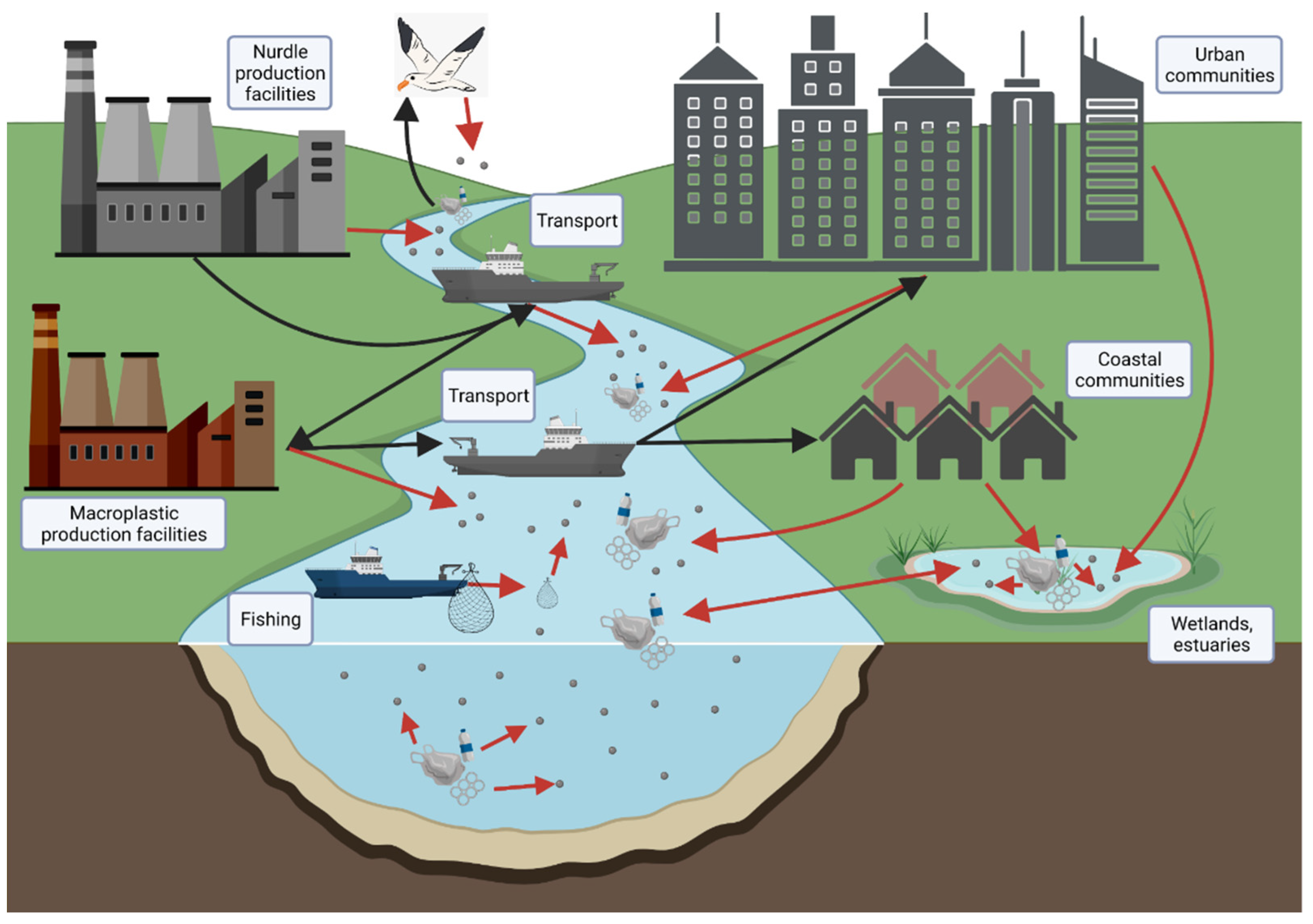/cloudfront-us-east-1.images.arcpublishing.com/gray/GQLYUEQCBRBRJKMG7MIPMCRUDE.jpg) Image from Pexels /Dantor / Wikimedia Commons / CC BY-SA 3.0
Image from Pexels /Dantor / Wikimedia Commons / CC BY-SA 3.0
The first time I ever read an article on micro plastic pollution, I brushed if off as not much of a concern. “It couldn’t be any worse than the plastic pollution we hear so often about”, I thought. On the surface, I pretty much felt indifferent upon being presented with yet another jeopardizing occurrence on earth. Issues regarding the planet are oftentimes improperly approached with this attitude. My feelings were quickly swayed when I learned that micro plastics could enter the human body, along with any other species.
The major issue of micro plastics  Image from nautil.us
Image from nautil.us
One of the most frightening things about micro plastics is that you can get in contact with them in the most unsuspecting ways.
A child could potentially swallow micro plastics when their formula is shaken up in their plastic bottle. Tiny bits of plastic can enter your food when you heat it in a plastic container. When you take a sip of water from your plastic bottle, you’ve likely ingested some. You could have even rubbed pieces of them on your skin when applying your favorite cosmetic product. When partaking in some of your most basic daily routines, it’s certain that you’ve taken in some of these tiny particles.
Who is impacted the most ? Image from mdpi.com
Image from mdpi.com
Anyone who lives, schools, or works in New York probably passes by bags of trash in front of buildings or stores, and knows that the waste management here isn’t the best. In fact, a great amount of trash from homes and businesses are thrown into landfills instate and within surrounding states. In general, urban cities do not have ideal environmental sustainability practices, thus leading to neighborhoods that are highly concentrated with micro plastics.
There are certain demographics that face the brunt of poor waste management. Black people are more likely to live in communities with a high-density of hazardous waste producing facilities. When not disposed of properly, these bulk waste products can break down into tiny fragments, presenting a great danger to the citizens who live in these areas of possibly inhaling or ingesting micro plastics.
Additionally, minority communities have less reach when it comes to effective recycling, which explains the low participation rate displayed throughout these neighborhoods. Plastic production remains at an all-time high, while consumer awareness on how to prevent plastic use from destroying their communities is outstandingly scarce.
Fighting against micro plastics
Although reducing micro plastic infiltration in the environment will certainly not be an easy job, there is an abundance of useful ways to decrease your vulnerability to them. These sustainable actions are also great to do with your family to jumpstart a venture in waste cutback. Reusing plastic items, filtering your water, as well as managing waste within your home can go a very long way in slowing the rapid existence of micro plastics in the atmosphere.
Now, even with individual steps being taken to conserve environments, the source must be tackled collectively. A halt on plastic production, and seeking more useful ways to utilize products would be the best key to saving our atmosphere from micro plastic pollution.
References
Lim, X. (2021). “Micro plastics are everywhere – but are they harmful?” Nature 593, 22-25 https://www.nature.com/articles/d41586-021-01143-3
Kannan, K. (2021). “A Review Into Human Exposure to Micro plastics and Insights into Micro plastics as Obesogens.” Frontiers in Endocrinology https://www.frontiersin.org/articles/10.3389/fendo.2021.724989/full

